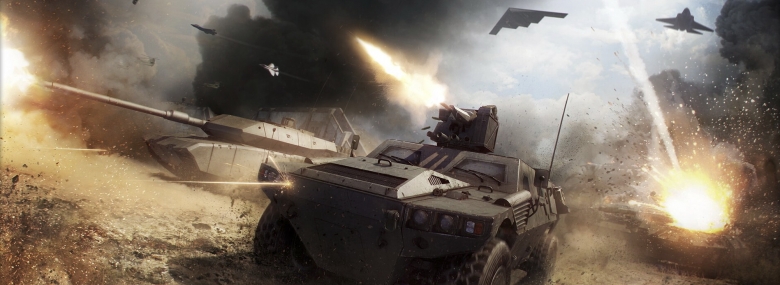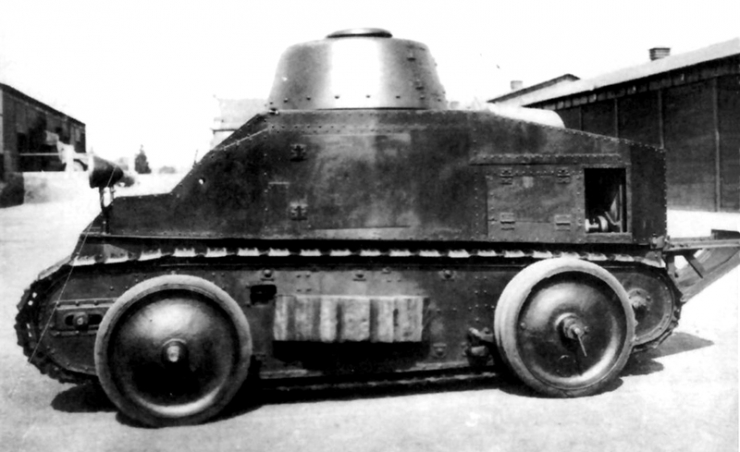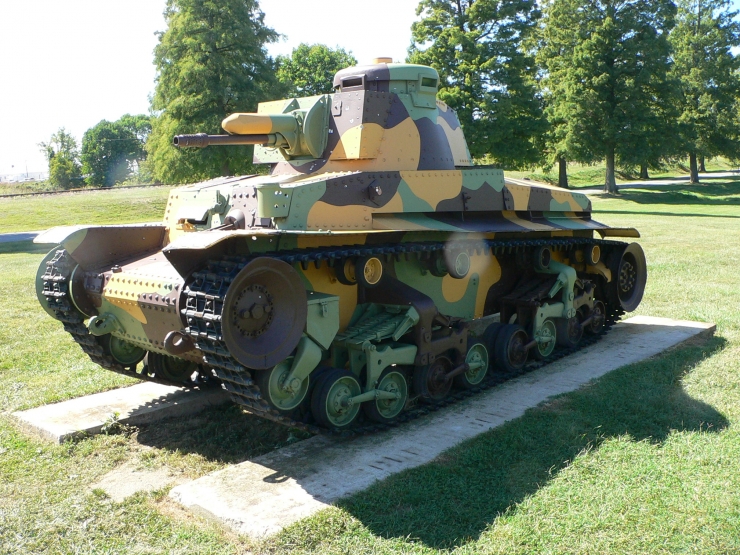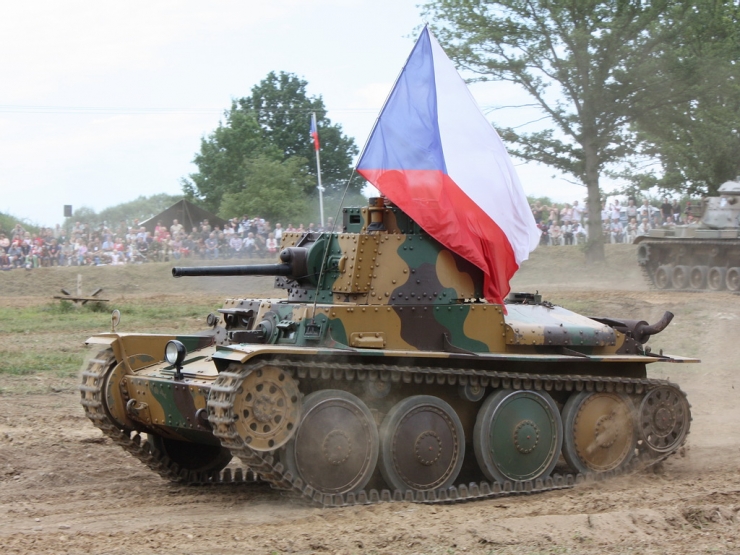
Czechoslovakia was established from the ashes of the Austro-Hungarian Empire as a result of internal political upheaval that finally led to its dissolution in 1918. During the two decades of its pre-WW2 existence, it was one of the most developed countries in the region, inheriting the majority of the former empire's industrial potential. Even before it existed as a separate entity, Czech-made Škoda artillery was world-famous so it was only logical for Czech companies to use the arms-making expertise to design and build tanks.
The Beginnings
The Czechoslovak army was from early on conceived as a mobile force to compensate for the lacking numbers of its larger neighbors. The most important element of its philosophy – mobility – came from the Legion experience. Czechoslovak Legions in Russia thrived on mobile warfare with infantry units supported by the firepower of armored trains and at one point practically controlled the entire Trans-Siberian Railway before being evacuated from Vladivostok and making their way back to their homeland. Old Legion officers were often appointed to positions of command.

Very early on (1918-1920), the Czechoslovak military, unlike its northern neighbor, had little in the way of armor, relying on a couple of obsolete armored trains and some very old armored cars from Italy. All the heavy equipment used by the Legions in Russia stayed behind when the troops were evacuated.
The first tanks of the Czechoslovak army, as was often the case back then, were French Renault FT vehicles from surplus sales. Attempts to purchase such vehicles date back to 1919 with the first 5 tanks being purchased and delivered in 1922 and 1923 and 2 more in 1924. The 20s were quite chaotic for Czechoslovak army development with military experts unable to agree upon the correct tactical use of tanks, so these Renault FTs for many years remained the only tracked armored vehicles of the Czechoslovak military. That however does not mean there were no attempts to change the situation and to develop the first indigenous tank for mass production.
In the 20s, tracked armor development took two basic directions. One was the "usual" way – Czechoslovak designers (the Praga Design Bureau) looked at ways to improve the Renault. The result were two proposals from the 20s, known as Praga MT ("malý tank" or small tank) and Praga YNH. The Praga MT was originally an artillery tractor-converted-tank. It was a project-only vehicle that was to be armed with the same gun the FT had (37mm Puteaux). The design however turned out to be even worse than the original Renault FT (its hull was very long) and development was quickly stopped. The second Praga project that resembled the FT came as late as 1930 and although it was definitely an improvement (for example it was to be armed with the Vickers 44/60mm gun that ČKD had the production license for), it came too late and the demands for armored vehicles had moved forward. This failure, however, did not deter Praga designers from continuing their research.

Unlike the example above, the second direction taken turned out to be a dead end – it involved wheel-cum-track suspension designs from Joseph Vollmer (a designer of First World War German tanks) who sold Praga the right to use some of his patents. The result was the "Kolohousenka" series of light armored vehicles with convertible suspension – they were rather light but the suspension was very complicated. Kolohousenka light armored vehicles were also unreliable, very top-heavy and had poor rough terrain performance. Several prototypes were built and Praga attempted to sell some abroad (to Russia for example) but without success. One prototype was assigned to a military school as a training vehicle and it stayed there until 1935. The army did not abandon the wheel-cum-track design completely until 1934 when the simplification requirements made it de facto impossible for such designs to fit in with army criteria.
It's worth noting that the entire 30s were marked by competition between Praga and Škoda, both renowned companies and both with their successes. Praga built the first truly mass-produced Czechoslovak light tank, the LT Vz.34 and the best light tank in the world of the early war period, the LT Vz.38 (known in German service as Panzer 38 (t)) while Škoda built the mainstay of the Czechoslovak armored might, the Š-IIa, also known as LT Vz.35 (or – in German service – Panzer 35 (t)). It is not really possible to say which company "won" in the end – during the war, both companies worked for the Germans and after the war they actually cooperated on certain tank programs until the 50s – after 1948, however, the Czechoslovak economy moved to Soviet-style central planning and the "competition" effectively ended.
The Thirties
Czechoslovakia entered the 30s with ever increasing weapons production (in the early years of the decade, Czechoslovakia was actually the biggest arms exporter in the world for a year or two). Unfortunately, the next "trend" in armor turned out to be about as successful as the last one – this time it was the tankette.
Tankettes are very small armored vehicles, usually for 2 soldiers. Perhaps the best known are the British (Carden-Loyd) and French tankettes but the Czechoslovak military, seeing the popularity of these vehicles abroad, could not stay behind and so the infamous Tančík Vz.33 (1933 pattern tankette) was born. It was based on a Carden Loyd design and it was possibly the worst armored vehicle to ever see service in the Czechoslovak army. It had practically no armor, it was slow, had poor all-terrain capabilities and most of all it was unreliable. Its only good quality was that it was cheap (which was the main argument in their favor). The soldiers hated these vehicles with a passion and their fears were confirmed when these tankettes were deployed against Nazi terrorists in the Czechoslovak borderlands in 1938 with very poor results. Despite all these issues, more than 70 were built. They were used mainly for training and after the German occupation of Czechoslovakia they were all most likely scrapped.

The rise of Nazism and the pressure in Europe in 1933 led to a complete overhaul plan for the Czechoslovak military. Earlier the tanks were only considered – as in many other countries – to be infantry support weapons, but the 1934 army development plan brought big changes by splitting future Czechoslovak armor development into three categories:
- Category I – tankettes
- Category II – light tanks (later to be split into IIa – cavalry light tanks, IIb – infantry light tanks and IIc – medium tanks)
- Category III – infantry assault vehicles (breakthrough tanks)
Category I mostly ended with the P-I (factory designation of the Tančík Vz.33) although there were other competing prototypes by Škoda (the MU series).
Category II was far more interesting. The first mass-produced tank of this category was the Praga P-II, developed between 1931 and 1932. It was a classic concept light tank, it had (for its time) sufficient armor (15mm) and the excellent 37mm Škoda A3 gun. It did win the army contract over its competitor from Škoda (Š-II, also known as S.U.) Soldiers liked this vehicle a lot – it was very reliable but it also had its flaws: in 1935 the protection was already insufficient and it was rather slow (32 km/h maximum speed). The decision was made, therefore, to replace it with something more modern. The remaining LT Vz.34 tanks served in various roles (usually as training vehicles) until 1939 when they fell into German hands, although by that time they were completely obsolete.

The replacement for the LT Vz.34 belonged to the IIa category. Just like before, two competing designs were made – the Škoda Š-IIa and the Praga P-IIa. Both were on par but at this point Škoda had a lot of political power and it was this power that helped the company tip the scales in its favor. In any case, it was a good choice. For its time (1935), the vehicle was simply excellent. It had a good blend of armor, firepower and reliability and it was accepted into Czechoslovak army service as the LT Vz.35. It was not all that fast (34 km/h), but the crews liked its ease of operation and maintenance. It was also widely exported, existed in many versions and was used by multiple armies – captured Czechoslovak stocks became the Panzer 35 (t), the Romanians used it as the R-2 and the Bulgarians used a somewhat modified version called "Lek tank Škoda". In the end over 400 were made in total. Contrary to the IIa category, the IIb category never really went anywhere as both Škoda and Praga produced vehicles of insufficient quality (P-IIb and Š-IIb).

Škoda may have won the previous round but it was Praga that in the end introduced the technical marvel that was the TNH chassis. Designed by Praga engineer and inventor Alexej Surin, the TNH series of vehicles were the best light tanks of the late inter-war period. Possibly the best known variant is the LT Vz.38, which was selected as the next Czechoslovak light tank, but before it could be properly fielded, all production fell into German hands. Superior to any other light tank in service at that time, it was this vehicle the Germans used to strengthen their armored divisions for their attacks on Poland and France.
Numerous variants of the TNH tanks existed and the series was sldo widely exported to Sweden (Strv m/41), Iran (TNH), Lithuania, Slovakia, Peru and other countries. While these vehicles became obsolete in 1941, despite improved variants still being produced, the suspension lived on and was used in numerous Czech-German projects. The most famous of these was the Jagdpanzer 38 (t) (incorrectly known as the "Hetzer"). After the war the TNH light tank concept was revived yet again in the TNH 57/900 and TNH based vehicles were used until the 60s.

One more topic that should be mentioned is the number of medium and "heavy" tank projects. Czechoslovakia produced two major medium tanks – the Škoda Š-IIc and the Praga V-8-H. Both were of roughly equal power and both were equipped with Škoda 47mm guns. For their time (1936-1937), they were quite advanced and sufficiently armored. Praga's model was trialed and selected to be the future medium tank of the Czechoslovak army under the designation ST Vz.39 ("medium tank 1939 pattern"). This plan, however, failed due to the occupation of Czechoslovakia and in the end the vehicle was never mass-produced. Škoda's vehicle on the other hand reached mass-production status abroad – it was sold to Hungary where it served under the designation "Turán". Original Turán tanks were modified Škoda vehicles but the Hungarians soon further developed the design independently of Škoda (which continued its own research into medium tanks during the war).

Unlike the successful light and medium tanks, the "heavy" tanks were a complete disaster. Two projects reached prototype stage (Š-III by Škoda and T-III by Tatra, a company with lots of armored car experience but no tank design experience whatsoever) and both were terrible – too heavy, very unreliable, underpowered, under-armored and extremely fuel-hungry. These prototypes were tested by the Czechoslovak military, which hated them and later on by the Germans, who considered them useless. They were probably scrapped during the war.
Wartime and post-war Czechoslovak armor development will be described in the second part of this series.






